Footprints and Harvest
From Midorigaoka to Omura along the Kinki Nature Trail
Same place, but a different time of day, different weather, and the difference in feeling between the end of something and the beginning. The sun had been setting, now it was rising invisibly behind a layer of cloud of varying shades of grey. The same road, but in reverse. Everything looked different in the increased light — I could see more of the houses, abandoned and occupied, more of the contents of fields, rice and daikon radish rows.
Another route I had walked before — my Japan Standard Time walk was crossed over. Familiar and yet slightly different, last time it had been winter, this time mid-autumn. An old lady smiled at me as I figured out which drink to get from a vending machine.
This time, I just clipped the edge of the town of Miki. Almost immediately I was back out into fields, where the rice harvest was in full-swing. The higanbana deep-red spider lilies of the field edge were already past their best, their petals starting to curl grey with decay.
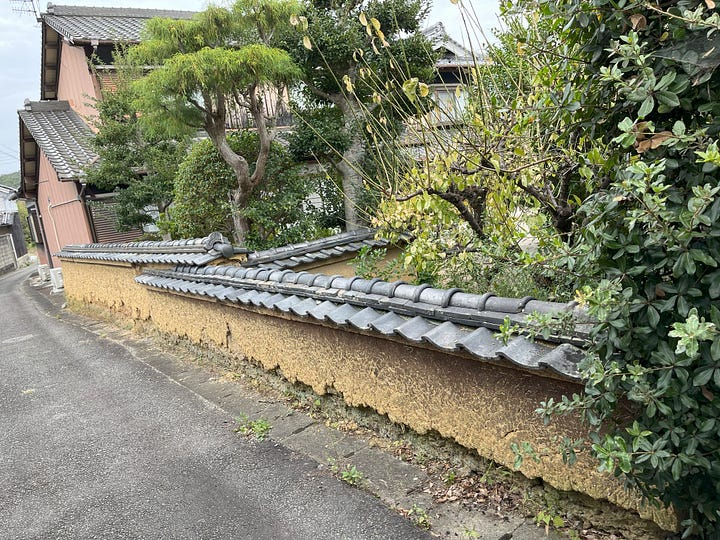


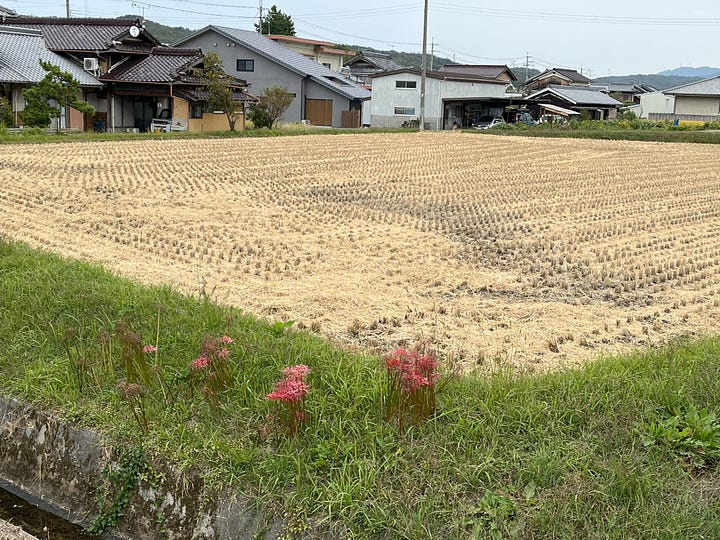
Rain threatened constantly. The sky spat a few drops and abruptly stopped. The smoke from fires of burning rice chaff rose lazily, the same colour as the sky.
The road followed the edge of the valley, between the forest that covered the hills and the being-harvested rice fields that covered the valley bottom. Then, sharply, it turned over the hills, between Nesta Resort and golf courses hidden among the trees.
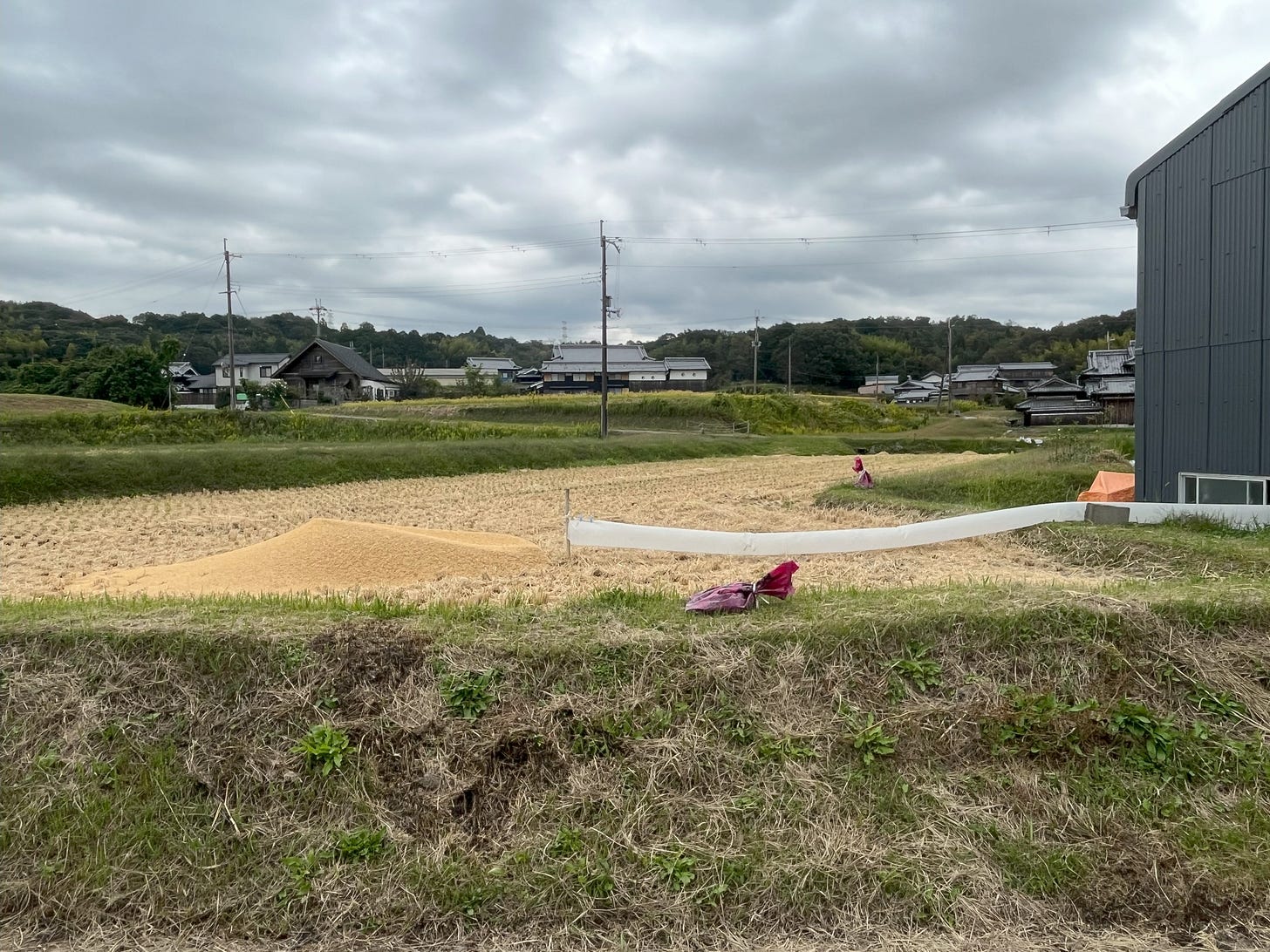
At the turn, I spotted a convenience store, bought lunch and found a bench at a bus shelter next to a line of jizo statues. They stared at me as I ate lunch and slurped my yoghurty drink. Then, I was off again, past goats tethered by the side of the road, under the expressway, and over the hills.
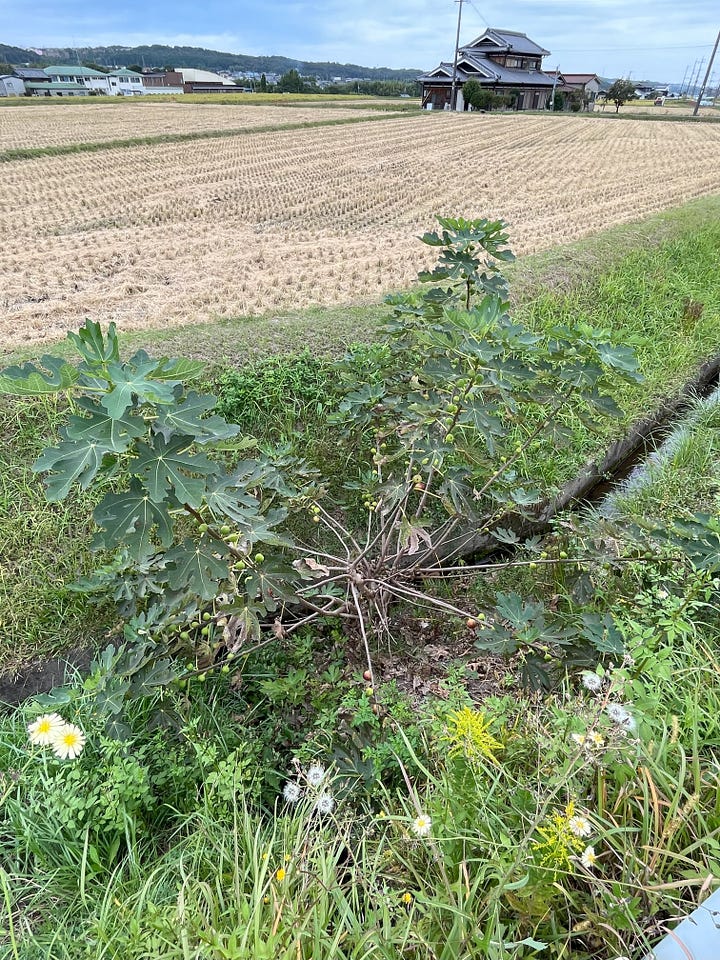
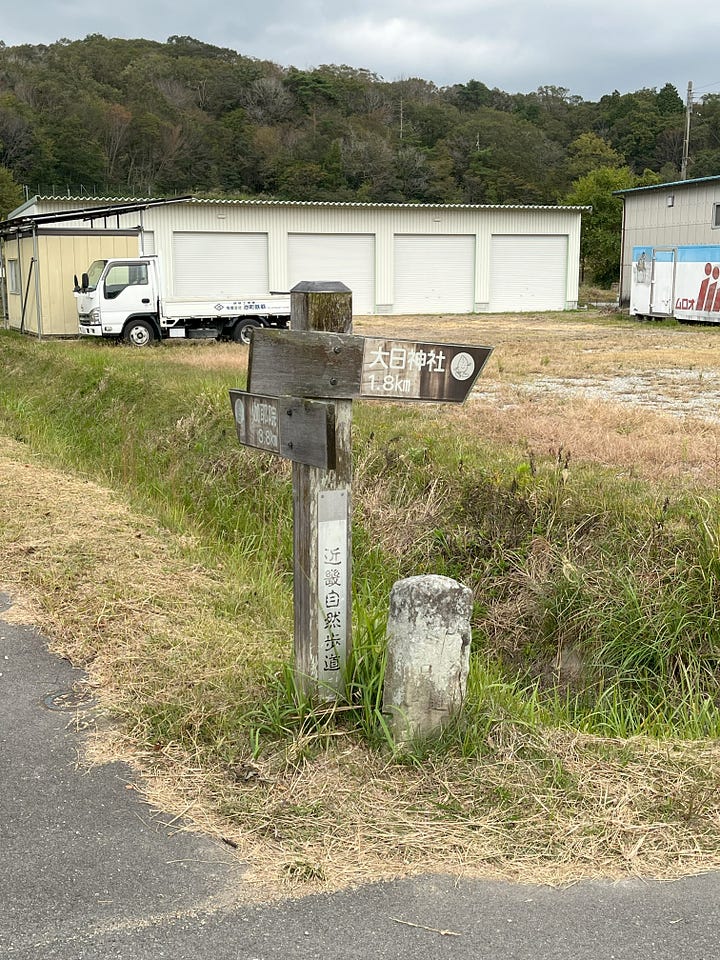
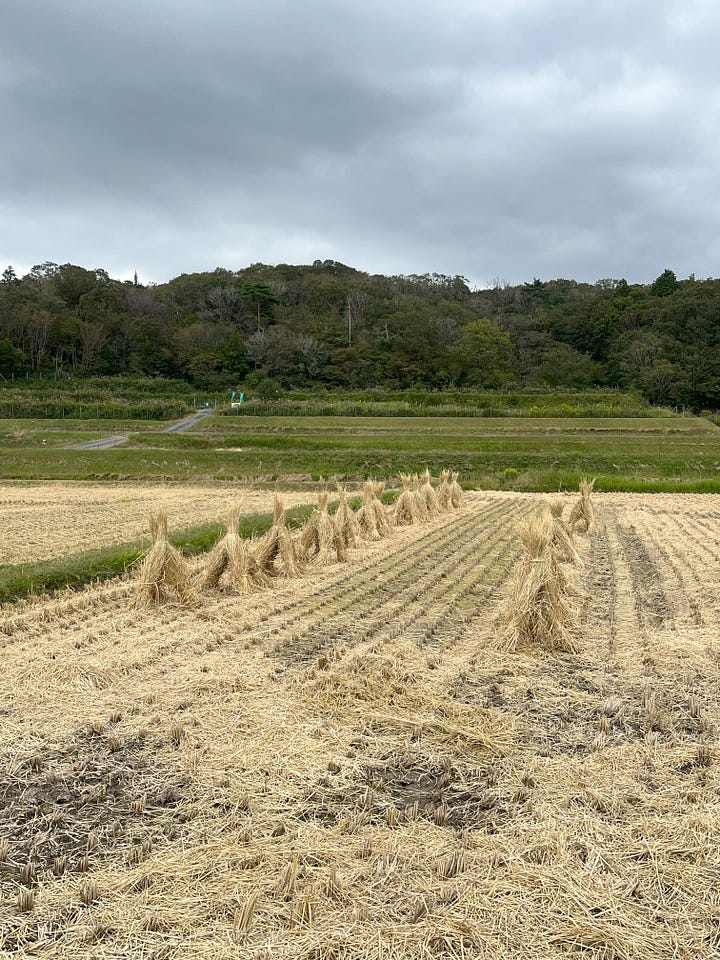
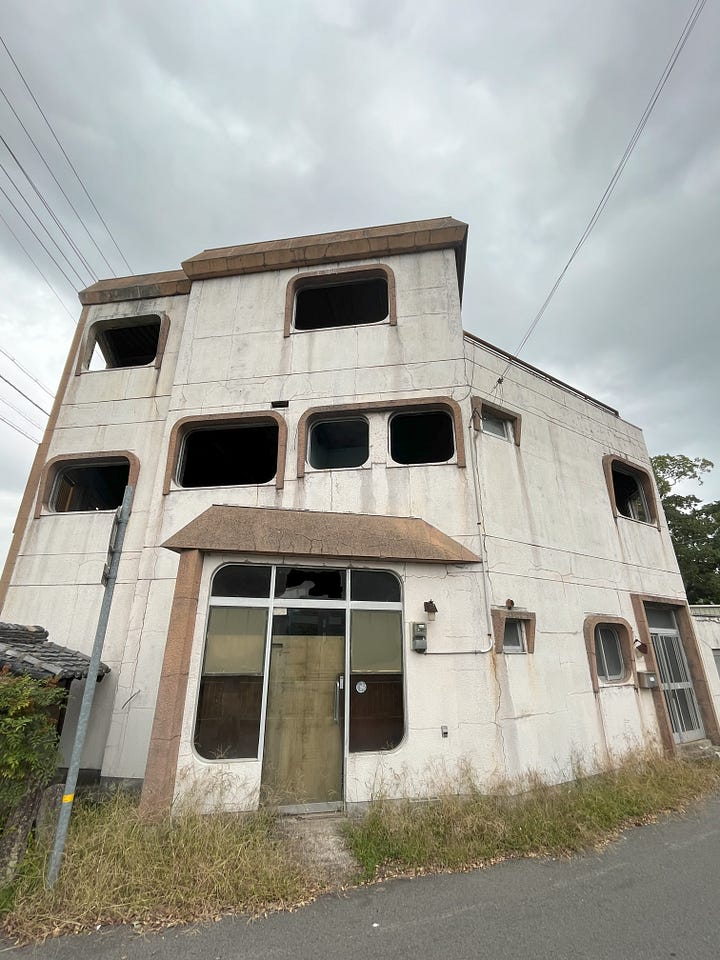
In the next valley, the signposting for the Kinki Nature Trail became unreliable. I had become used to signs sun-faded to blank brown. But now, the signs were non-existent, or pointed uselessly to paths blocked by signs saying “entry forbidden”. I lost time wandering fruitlessly up and down a village road trying to find the trail.
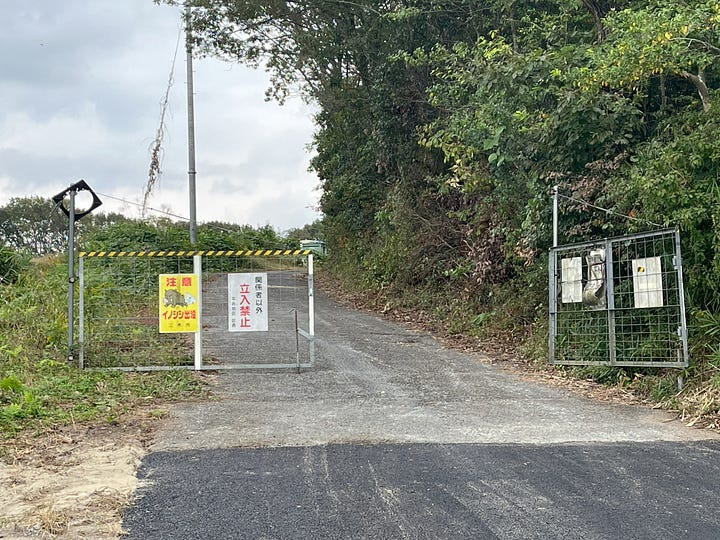
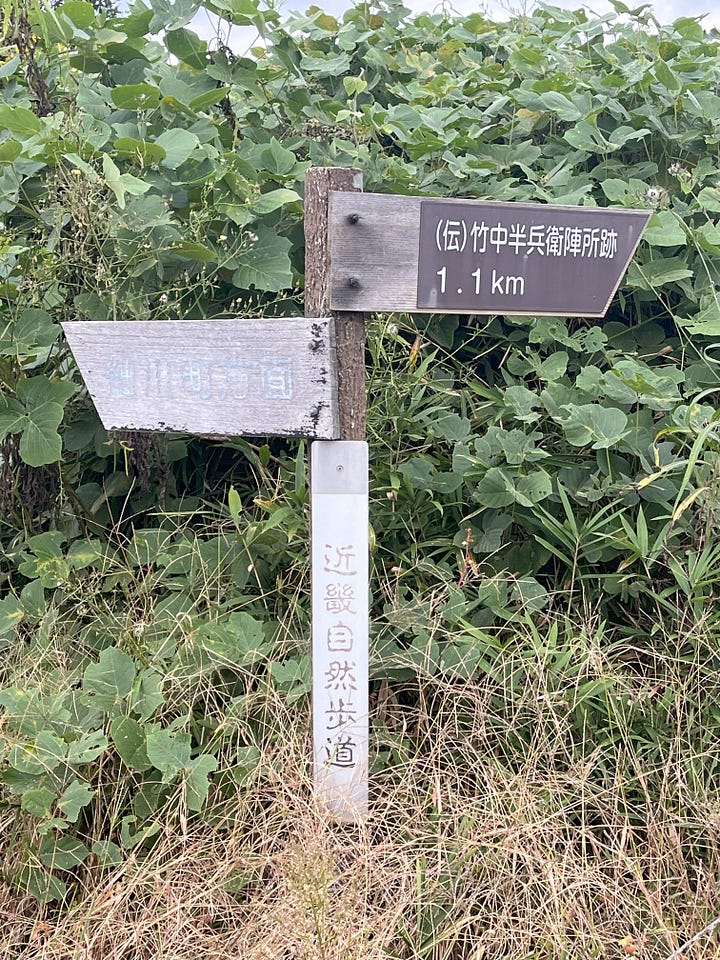
The rain spat harder and longer. I could see the expressway again, crossing on tall concrete legs across the valley. From wiggling country lanes, I was forced back onto the main road under the expressway.
A small concrete dam across the Mino River acted as a bridge to the other side. I followed the river round as it broadened back into Miki. In a field next to the river, edamame soy beans were growing, and at the field edge, an errant fig tree.
There was something else by the side of the road — a footprint of a warrior-monk embedded in rock. In the midst of the Genpei War, the legendary warrior Benkei was helping to chase the defeated Taira/Heike army towards Miki and somehow left his footprints on the reverse of two stones from which jizo statues have been carved. How exactly this occurred, and why, is not really explained by the associated signboard, which dismisses it as a ridiculous story. But it does help to keep the story of this part of the Genpei War alive. I wasn’t quite sure which part of the stone the imprint was supposed to be in, but if it is the deep imprint, Benkei sure had tiny feet for a guy who was supposed to be six feet six inches tall.
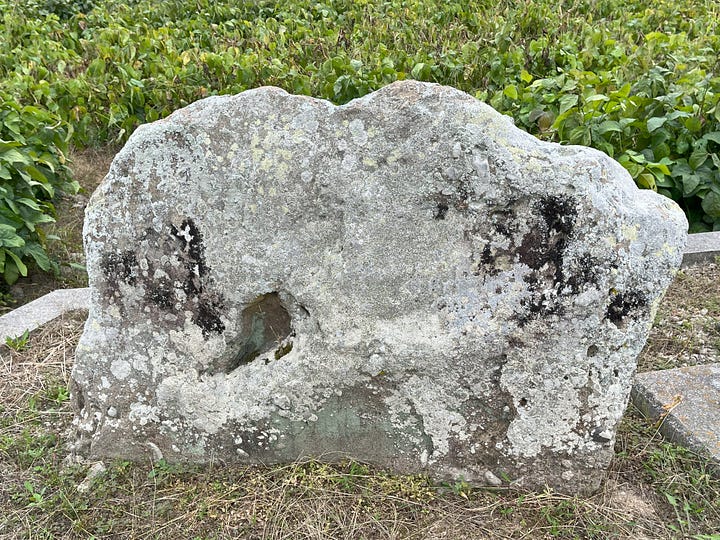
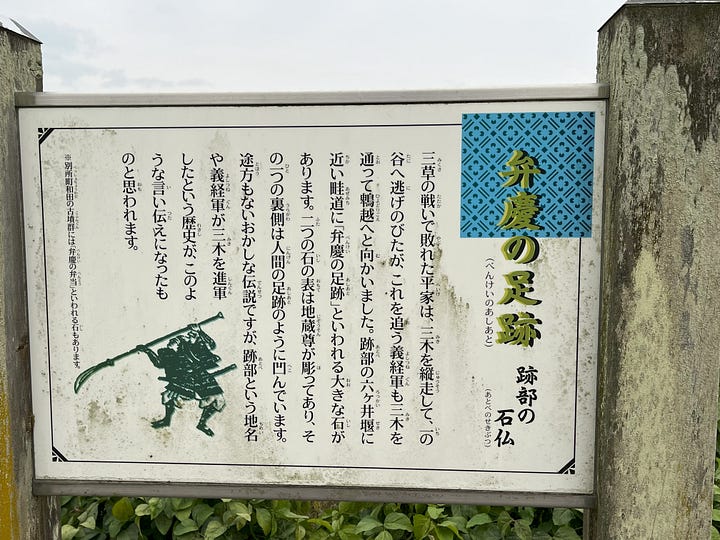
Just as the Kobe Electric Railway begins to rise to cross the final ridge of hills before the Kakogawa valley, lies the village of Omura. And here, I decided to break off for the day — it would be a lot farther before the next station on the far side of the Kakogawa.





I enjoyed that. Well written!
That abandoned building has a bit of an art nouveau feel to it. Unexpectedly stylish!